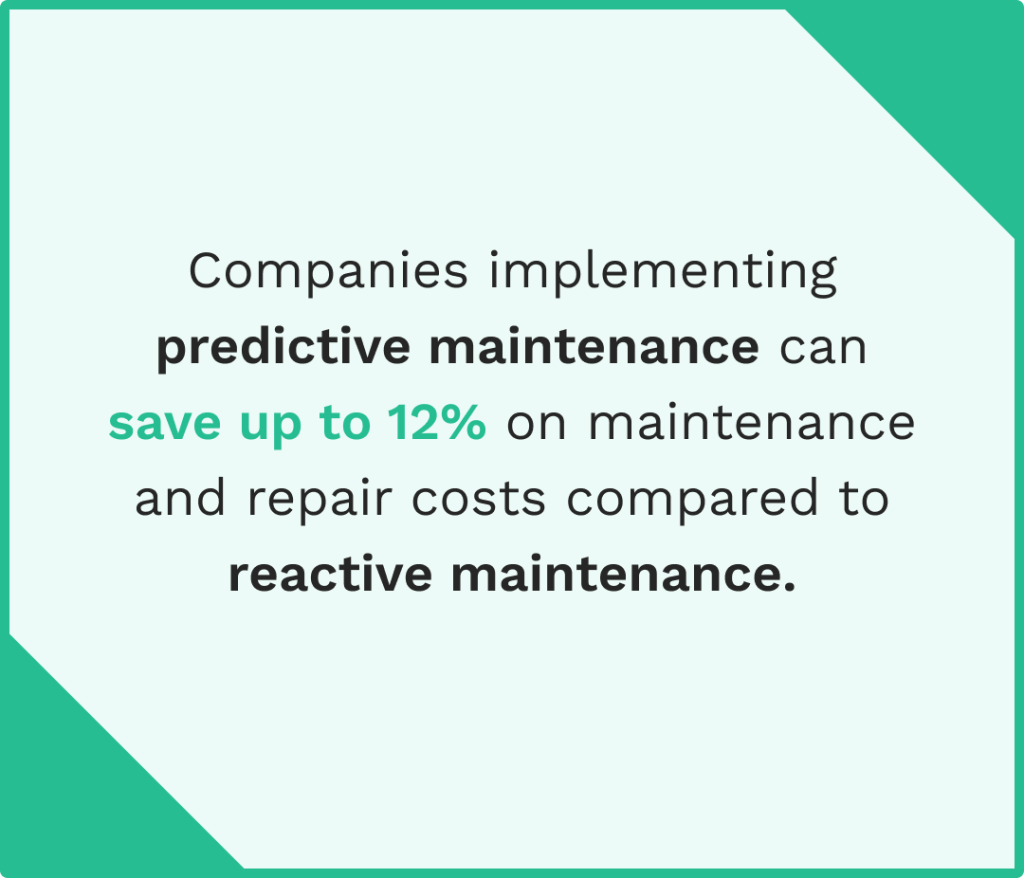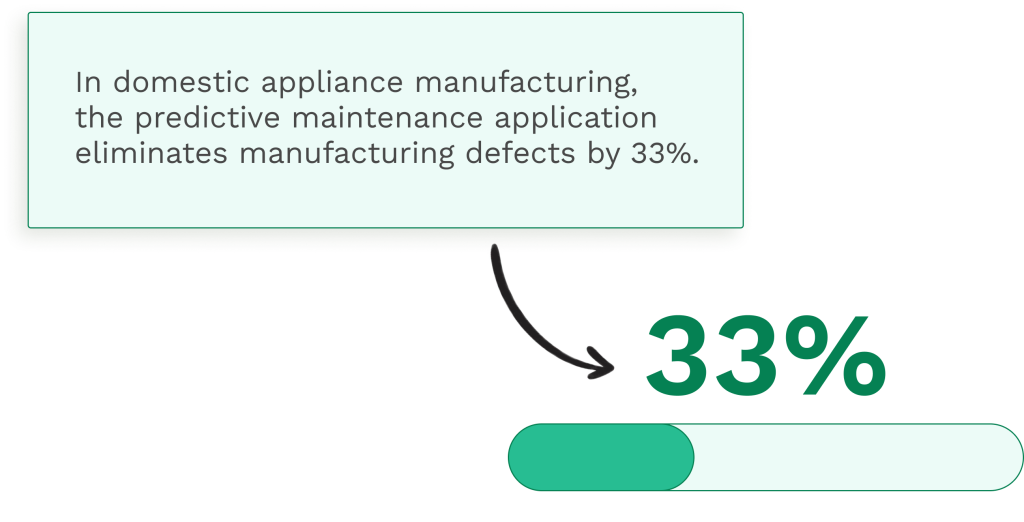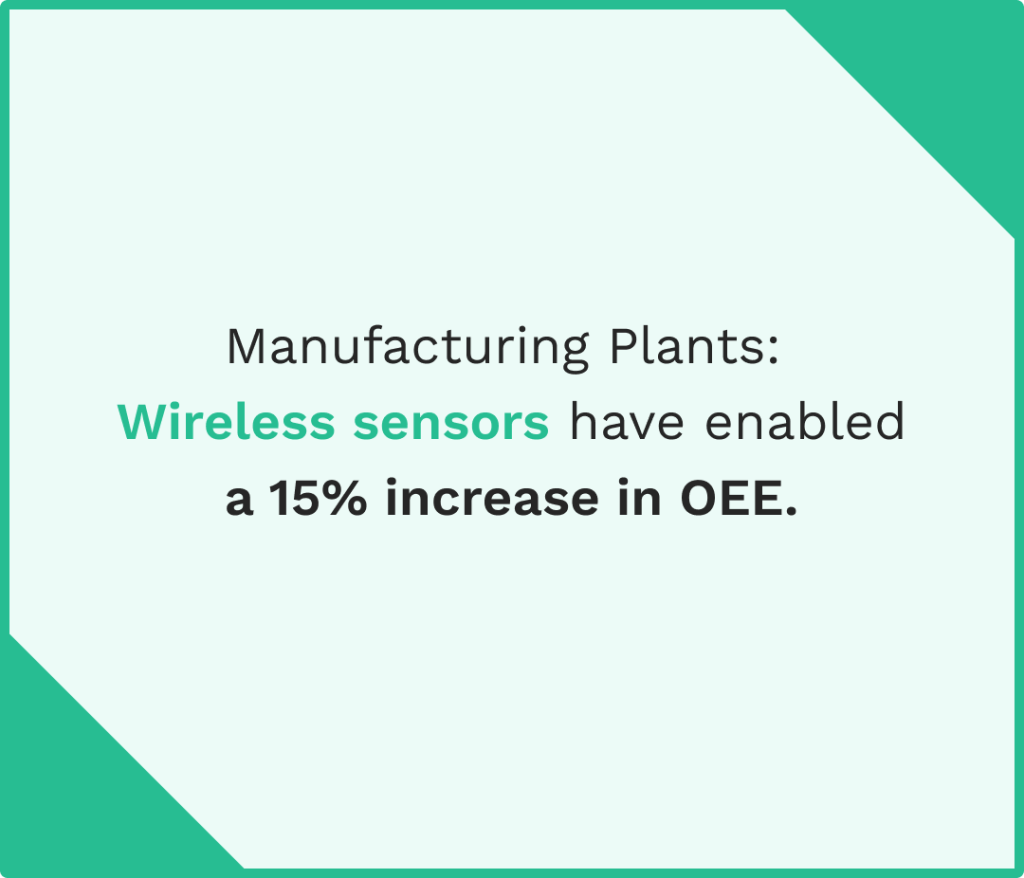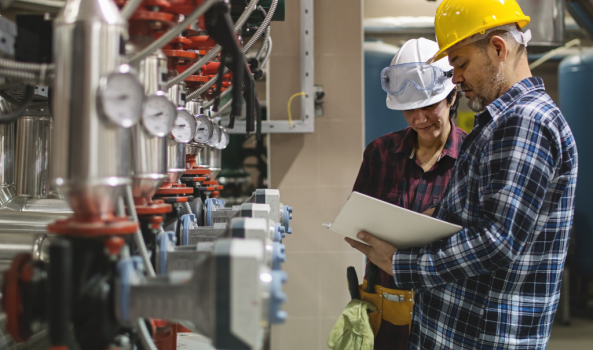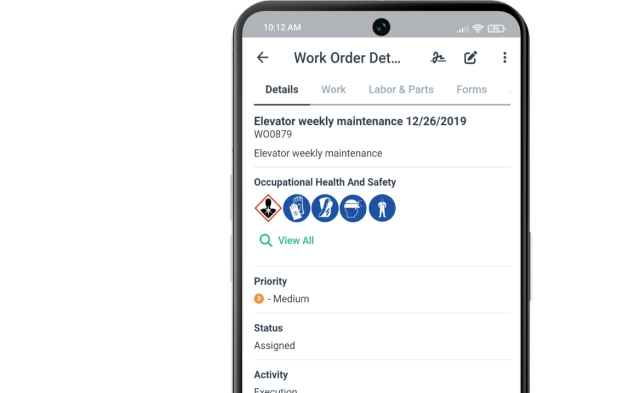Get a Free WorkTrek Demo
Let's show you how WorkTrek can help you optimize your maintenance operation.
Try for freeKey Takeaways:
- Predictive maintenance delivers an average ROI of 10:1, with savings of 18-25% compared to preventive maintenance
- Modern preventive and predictive maintenance solutions are more accessible than ever, with cloud-based CMMS platforms offering entry-level options
- Companies using predictive maintenance report 30-50% reduction in machine downtime and 20-40% increase in equipment life
- Integration with existing systems is simpler today, with 65% of companies already using CMMS to monitor operations
Picture this: your HVAC system is humming along perfectly when suddenly, a critical compressor fails. Production grinds to a halt.
Your maintenance teams scramble to find replacement parts. Energy bills skyrocket as backup systems strain to compensate. Sound familiar?
This scenario plays out daily across facilities worldwide. This can cost companies millions in unnecessary downtime and reactive maintenance.
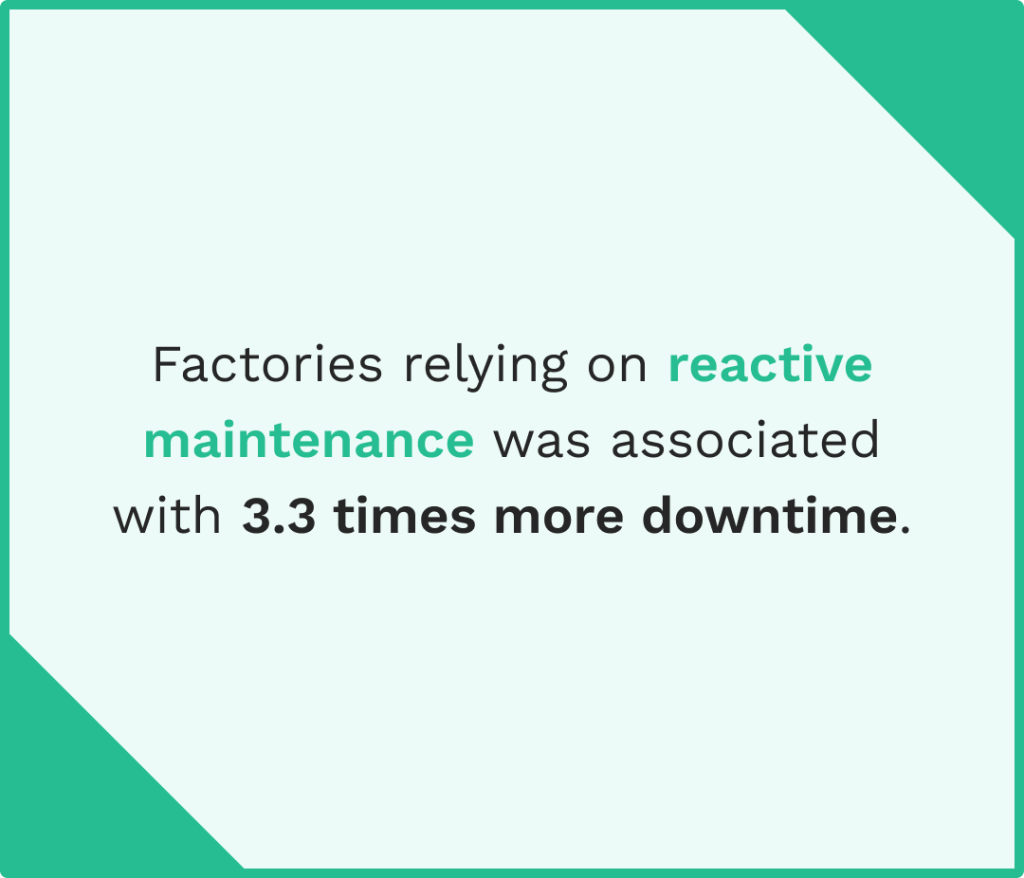
Yet many organizations still cling to outdated beliefs about predictive maintenance that prevent them from embracing this game-changing approach.
The truth is, predictive maintenance has evolved dramatically. What was once complex machinery reserved for Fortune 500 companies is now accessible, cost-effective technology that saves money while keeping operations running smoothly.
According to recent industry data, companies implementing predictive maintenance see an average return on investment of 10:1, with some organizations reporting savings of up to $1,000 per machine annually.
Let’s separate fact from fiction by examining six common myths about predictive maintenance.
Myth 1: Predictive Maintenance Is Too Expensive for Most Companies
One of the most persistent and costly misconceptions about predictive maintenance is that it requires a massive upfront cost that is only accessible to large corporations that can afford it.
This outdated belief comes from the early days of condition monitoring.
In those days, specialized equipment could cost six figures and require dedicated teams of certified professionals to operate.
The Reality Today
Today, modern predictive maintenance has become remarkably cost-effective. The benefits are clear, according to the U.S. Department of Energy, predictive maintenance saves 8-12% more than preventive maintenance.
What is even more impressive is that it can save up to 40% compared to reactive maintenance approaches.
The big question is whether these savings can offset initial investments. Research from McKinsey shows that predictive maintenance can reduce maintenance costs by 18-25%. Given those savings, you can calculate your ROI while delivering additional value through increased uptime.

Today’s predictive maintenance solutions come in various price points:
- Entry-level vibration analysis tools start at a few thousand dollars
- Cloud-based monitoring systems operate on subscription models, eliminating huge upfront capital expenditures
- CMMS platforms with predictive capabilities offer scalable pricing based on your maintenance needs
- IoT sensors have dropped dramatically in price, making real-time data collection affordable
The key is starting small. You don’t need to monitor every piece of equipment from day one.
Keep your focus on critical assets where equipment failures cause the most expensive repairs or unnecessary downtime.
As you see and evaluate results, you can expand your predictive maintenance program.
Myth 2: Only Large Manufacturing Plants Need Predictive Maintenance
Surveys and studies show that many facility managers believe predictive maintenance is overkill for their operations.
This thinking is tied to the belief that predictive maintenance should only be used on complex machinery.
This myth causes smaller operations to miss out on significant cost savings and operational efficiency gains.
Why Every Facility Benefits
The reality is that any organization with critical equipment can benefit from data-driven maintenance decisions.
Whether you’re managing HVAC systems in an office building, maintaining a fleet of delivery vehicles, or overseeing equipment in a small manufacturing plant, predictive maintenance delivers value.
Consider these statistics:
- A 29-story office building saved $16,742 in operating costs and $32,300 in repair costs annually by implementing predictive maintenance for its HVAC systems alone
- The transportation industry expects to see the fastest growth in predictive maintenance adoption between 2020 and 2025
- Even small manufacturers report 5-10% increases in overall equipment effectiveness (OEE) with predictive maintenance
Small and medium-sized businesses often see faster ROI because:
- Lower complexity means easier implementation
- Fewer assets require less initial investment
- Tighter budgets make cost savings more impactful
- Limited staff benefit more from automated monitoring
The automotive sector has seen a 15% increase in productivity through the use of predictive maintenance applications.
These aren’t just massive assembly plants; they include smaller suppliers and service centers that have embraced proactive maintenance.
Modern CMMS solutions like WorkTrek make predictive maintenance accessible regardless of company size.
These user-friendly platforms can monitor equipment performance, track maintenance data, and predict potential failures without requiring a dedicated data science team.
Myth 3: Predictive Maintenance Eliminates All Equipment Failures
Some organizations hesitate to invest in predictive maintenance since it is not a perfect solution.
We all know that even the most preventative maintenance schedules can result in equipment failure. Organizations assume that because of that, predictive maintenance won’t fare much better.
Setting Realistic Expectations
No maintenance strategy can eliminate all equipment failures. However, predictive maintenance dramatically reduces both the frequency and impact of breakdowns over just regular maintenance.
Industry data shows that organizations implementing predictive maintenance programs see:
- 70-75% elimination of breakdowns
- 35-45% reduction in downtime
- 30-50% decrease in unplanned equipment failures
- 20-40% extension in equipment life
The goal isn’t always perfection, but rather optimizing routine maintenance to maximize efficiency.
Predictive maintenance utilizes real-time data and condition monitoring to identify issues before they lead to costly repairs or operational disruptions.
While you can’t prevent every failure, you can:
- Minimize downtime by scheduling repairs during planned maintenance windows
- Reduce the severity of asset failures by catching problems early before they cascade
- Improve safety by preventing catastrophic failures
- Optimize resources by focusing maintenance tasks where they’re needed most
One good example is a steel manufacturer that uses predictive maintenance on its transformers, which provides a perfect example.
When sensors detect unusual heat patterns, they can schedule maintenance during a planned shutdown. This can prevent long downtimes that cost a lot of money.
Think of predictive maintenance as your early warning system.
Just as smoke detectors don’t prevent all fires, they can give you time to respond. Predictive maintenance enables the early detection necessary to prevent minor issues from escalating into major failures.
Myth 4: Implementing Predictive Maintenance Requires Replacing All Existing Equipment
Many maintenance teams believe they need to scrap their current equipment and invest in new machinery with built-in sensors to implement predictive maintenance. This misconception keeps organizations stuck with reactive maintenance and rising maintenance costs.
Working with What You Have
The truth is, most existing equipment can be retrofitted with monitoring capabilities. You don’t need to replace functioning assets to gain predictive insights.
A lot of the modern solutions are designed to work with legacy equipment:
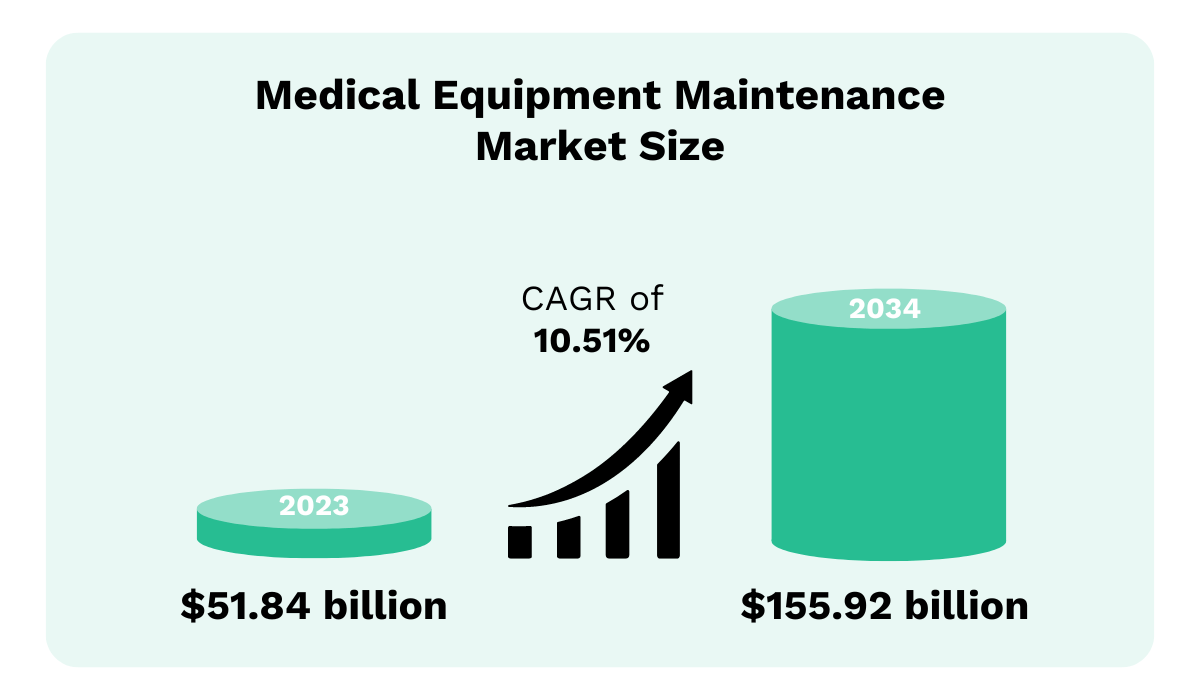
Retrofit Options:
- External sensors can be attached to existing motors, pumps, and other equipment
- Wireless vibration sensors mount directly on bearing housings
- Temperature monitoring devices clip onto equipment surfaces
- Current sensors wrap around existing power cables
- Ultrasonic detectors identify leaks without equipment modification
Even 20-year-old equipment (the average age of industrial assets in the U.S.) can benefit from predictive monitoring.
Original equipment manufacturers (OEMs) increasingly offer retrofit packages specifically designed for older models. These solutions provide:
- Compatibility with existing control systems
- Minimal installation downtime
- Training for your current maintenance teams
- Integration with your existing CMMS
Start with your most critical assets that are most critical to your organization.
Remote monitoring capabilities enable you to track equipment performance from anywhere, either in your office or on your mobile phone.
Myth 5: Predictive Maintenance Technology Is Too Complex for Most Teams
There is a fear in the industry that predictive maintenance requires data scientists, complex algorithms, and extensive training.
This misconception ignores how user-friendly modern predictive maintenance solutions have become.
Simplicity Through Smart Design
Today’s predictive maintenance tools are designed for maintenance teams, not IT specialists.
A lot of the modern platforms emphasize:
Intuitive Interfaces:
- Dashboard views that highlight critical information
- Color-coded alerts for quick problem identification
- Automated reporting that translates data into actionable insights
- Mobile apps that put information in technicians’ hands
According to industry surveys, 80% of maintenance personnel still prefer preventive maintenance, often because they’re intimidated by predictive technology.
However, companies that have made the switch report that the learning curve is much gentler than expected.
Consider how modern CMMS platforms handle predictive analytics:
- Automated data collection eliminates manual recording errors
- Pre-built algorithms identify patterns without custom programming
- Plain-language alerts explain issues without technical jargon
- Recommended actions guide maintenance decisions
- Integration with existing workflows minimizes disruption
Training requirements are surprisingly minimal. Most vendors provide:
- On-site implementation support
- Online training modules at your own pace
- Ongoing technical assistance
- User communities for peer support
The shift from reactive to predictive maintenance is less about complex technology and a lot of the time is about changing mindsets.
When teams see the benefits of predictive analytics and how it simplifies their work, adoption becomes natural.
Myth 6: Predictive Maintenance Is Only About Preventing Breakdowns
It is always important to prevent equipment failure. However, viewing predictive maintenance only through this lens drastically undervalues its benefits.
This narrow perspective results in the organization missing opportunities for operational efficiency.
The Broader Impact of Predictive Maintenance
Predictive maintenance can transform your entire maintenance operation into a finely tuned machine.
Here’s what organizations actually gain:
Energy Efficiency Improvements
Energy costs make up a significant part of any manufacturing facility’s budget. It is also not a surprise that well-maintained equipment uses less energy.
Dirty filters, misaligned components, and worn parts force machines to work harder, driving up energy bills.
The good news is that predictive maintenance identifies these inefficiencies before they impact your bottom line.
According to a study, companies report 5-10% reductions in energy consumption simply by maintaining optimal equipment performance.
Extended Asset Life:
Instead of running equipment to failure or replacing parts on arbitrary schedules, predictive maintenance helps you maximize equipment life. It does this by using real-time data that reveals actual wear patterns, allowing you to:
- Replace components at optimal times
- Adjust operating parameters to reduce wear and tear
- Balance loads across multiple assets
- Identify and eliminate root causes of premature failure
Studies show predictive maintenance can extend asset lifespan by 20-40%, delivering massive savings in capital expenditure.
Enhanced Safety
Early detection of potential failures doesn’t just save money—it saves lives. Predictive maintenance identifies safety risks before they become hazards:
- Detecting bearing failures before catastrophic equipment breakdown
- Identifying electrical issues before they cause fires
- Monitoring structural integrity to prevent collapses
- Alerting teams to abnormal operating conditions
Better Resource Allocation:
With predictive insights, maintenance teams can:
- Schedule work during planned downtime
- Order parts just in time, reducing inventory costs by 20-50%
- Assign certified professionals to tasks that truly need their expertise
- Eliminate unnecessary preventive maintenance tasks
Competitive Advantage
Companies using predictive maintenance report improved product quality, better customer satisfaction, and increased market competitiveness.
How CMMS Helps Bridge the Gap to Predictive Maintenance
When it comes to asset maintenance, the transition from reactive or preventive maintenance to predictive maintenance doesn’t happen overnight.
This is where a robust CMMS becomes your most valuable ally, serving as the foundation for your data-driven maintenance evolution.
Building Your Predictive Foundation with CMMS
A modern CMMS, like WorkTrek, transforms scattered maintenance data into actionable, predictive insights.
Here’s how CMMS platforms enable effective predictive maintenance:
Centralized Data Collection
Before you can predict failures, you need a comprehensive maintenance history. CMMS automatically captures:
- Complete work order histories
- Actual vs. planned maintenance costs
- Equipment performance trends
- Failure patterns and frequencies
- Parts usage and inventory levels
his historical data becomes the baseline for predictive analytics, helping identify patterns that human observation might miss.
Integration Capabilities
Modern CMMS platforms seamlessly connect with:
- IoT sensors for real-time equipment monitoring
- Building management systems for HVAC performance
- ERP systems for cost tracking
- Mobile devices for field data collection
The Real Cost of Believing These Myths
While we’ve debunked these common myths individually, it is important to understand the cumulative impact of maintaining these outdated beliefs.

The Hidden Price of Inaction
Consider these industry statistics:
- Unplanned downtime costs manufacturers an average of $260,000 per hour
- In the automotive industry, that figure reaches $695 million annually per plant
- 82% of companies have experienced at least one unplanned outage in the past three years
But the costs go well beyond just downtime:
Maintenance Overspending
Organizations using reactive maintenance spend 40% more than those using predictive approaches.
Premature Equipment Replacement
Without predictive insights, companies replace equipment based on age rather than condition.
Studies show that less than 10% of industrial equipment actually wears out, but most failures are preventable with proper maintenance.
Energy Waste
Poorly maintained equipment consumes 15-30% more energy. For a facility spending $500,000 annually on energy, that’s up to $150,000 in unnecessary costs.
Safety Incidents
Equipment failures cause 35% of workplace accidents.
The human cost is immeasurable, while the financial impact can be insurmountable for organizations.
The Competitive Disadvantage
While you’re busy dealing with unexpected breakdowns and emergency repairs, your competitors using predictive maintenance are:
- Delivering products on time, every time
- Operating at lower costs
- Investing savings into innovation
- Building a reputation for reliability
The longer you wait, the wider this gap becomes.
Taking the First Step Toward Predictive Maintenance
We can report based on our experience that breaking free from these maintenance myths doesn’t require a complete overhaul of your operations.
The journey to predictive maintenance can start with simple, strategic steps that deliver immediate value. Once you get experience, you can continue to push predictive maintenance programs to add to additional equipment.
Below is a simple schedule for rolling out predictive maintenance:
Start Small, Think Big
Week 1-2: Assess Your Current State
- List and document your most problematic equipment
- Calculate current downtime costs
- Identify maintenance data you’re already collecting
- Evaluate your team’s technical comfort level
Month 1: Choose Your Pilot Program
- Select 1-3 critical assets for initial monitoring
- Focus on equipment with:
- High failure rates
- Expensive downtime impact
- Available historical data
- Clear failure patterns
Month 2-3: Implement Basic Monitoring
- Deploy simple sensors (vibration, temperature)
- Begin collecting baseline data
- Set up basic alerts for abnormal conditions
- Track results and refine thresholds
Month 4-6: Expand and Optimize
- Add additional assets based on initial success
- Integrate monitoring with your CMMS
- Train team on interpreting predictive insights
- Calculate ROI and plan broader rollout
Making the Business Case
To gain buy-in from leadership, focus on these compelling points:
Quick Wins:
- Predictive maintenance typically pays for itself within 6-12 months
- Even preventing one major failure can justify the entire investment
- Energy savings alone often cover 30-40% of implementation costs
Risk Mitigation:
- Reduced liability from equipment-related incidents
- Improved compliance with safety regulations
- Better insurance rates due to fewer claims
- Protection against supply chain disruptions
Strategic Value:
- Competitive advantage through reliability
- Improved customer satisfaction
- Better capacity planning
- Enhanced sustainability metrics
Conclusion
The myths surrounding predictive maintenance have kept organizations trapped in cycles of reactive repairs. This has naturally led to an increase in reactive maintenance.
As this blog post has highlighted, modern predictive maintenance is accessible, affordable, and achievable for organizations of all sizes.
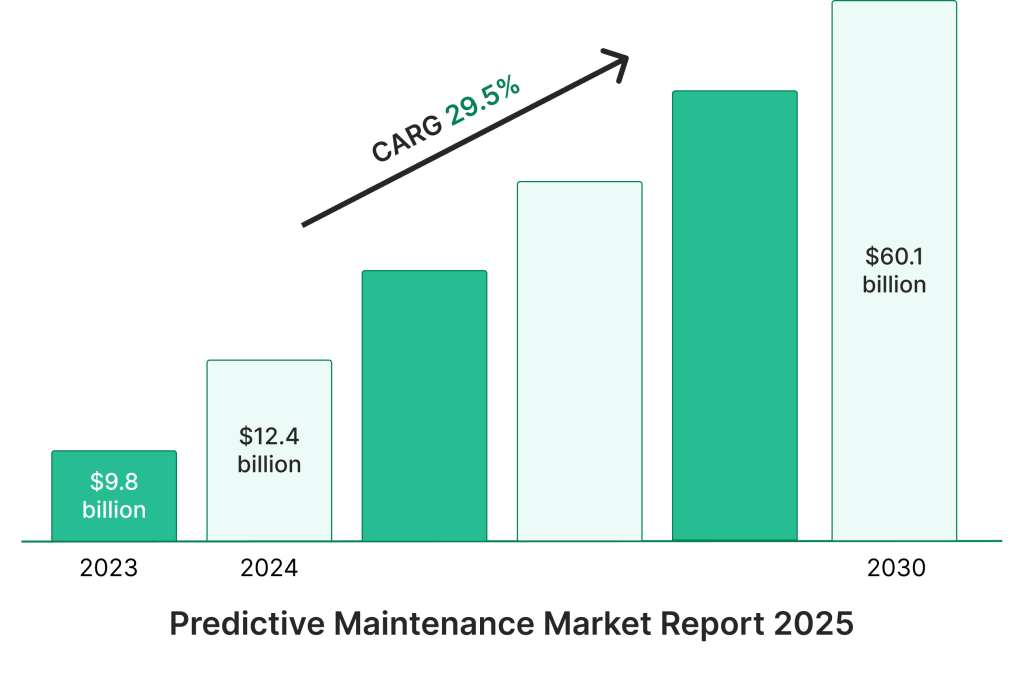
Whether you’re managing a small facility with basic HVAC systems or overseeing complex manufacturing equipment, the tools and technologies exist to transform your maintenance operations.
The only question remaining is: how much longer can you afford to wait?
Take the first step toward predictive maintenance today. Your equipment, your team, and your bottom line will thank you.




